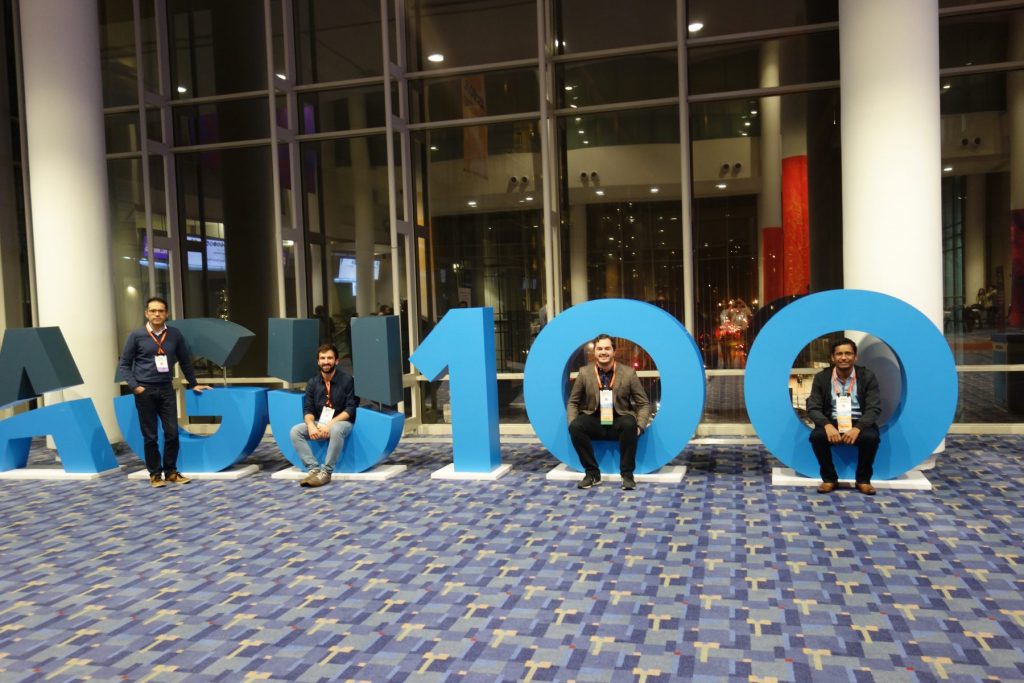The AlpArray Surface Wave, Ambient Noise and Full Waveform Inversion research group will hold its next meeting on Thursday and Friday, February 21-22 in Lyon, France. Beyond research progress reports within the group, presentations from other groups (such as the Receiver Function group) will take place, as well as discussion on joint inversion.
News
Manipur earthquakes
There were 3 earthquakes near Manipur (India), with magnitudes 4.6-4.7 each, within a 55-hour timespan and ca. 70 km distance, according to the USGS catalogue. The focal depths were between 55 and 68 km. Although this segment of the India-Burma subduction is known to be seismically active, this is a relatively rapid succession of light events.
Laura Airaghi’s visit
On Monday January 14th, Laura Airaghi from the Institut des Sciences de la Terre de Paris will visit ISTE. She will present a seminar on Linking microstructures to petro-chronology in low-grade metamorphic rocks: an approach to investigate large-scale deformation mechanisms in collisional settings (eastern Tibet and Pyrenees) at 11h00 in room 2121.
AGU 2018 Fall Meeting
The AGU Fall Meeting took place last week in Washington D.C. Our group member’s contributions:
- Subedi S, Hetényi G, Denton P and Sauron A (ED51C-0677). Seismology-at-School in Nepal: a first regional educational and seismic network.
- Colavitti L,Hetényi G and AlpArray Working Group (S31D-0535). A new technique to construct 3-D Vs models: Implementation of Ray Tracing, Model Parameterization and Inversion.
- Alvizuri CR, Walter F and Hetényi G (S51D-0367). Seismic moment tensor and single force analysis of landslides in Switzerland and Greenland.
- Scarponi M, Hetényi G, Plomerova J, Solarino S, Berthet T, Baron L and AlpArray-Ivrea Working Group (T51G-0249). High-resolution imaging of the Ivrea Geophysical Body: A joint seismic and gravity approach.
- Pistone M, Petri B, Müntener O, Almqvist BSG, Hetényi G, Zappone A and Baumgartner L (V33D-0272). Unravelling magma emplacement mechanism in the lower crust: A forensic investigation of the Mafic Complex, Ivrea-Verbano Zone (Italy).
The meeting will take place in San Francisco (California) in 2019.

Bjarne Almqvist’s visit
Today Bjarne Almqvist from Uppsala University is visiting ISTE. In the afternoon he will present a seminar on Collisional Orogeny in the Scandinavian Caledonides (COSC) Project: Investigating mountain building through scientific drilling at the usual time and place.
Nepali school seismology network project
The School seismology project in Nepal has recently featured in the Raspberry Shake news. You can read the full story on their website.
Swiss Geoscience Meeting 2018 Bern
The whole group is contributing to the 16th Swiss Geoscience Meeting in Bern, with one poster per person, in sessions 1, 7 an 16. Check the meeting program here.
The crustal structure study in Western Nepal is accepted
The first paper on crustal structure in western Nepal, a study from our group, is recently accepted for publication in Geophysical Research Letters (GRL). The Moho and the Main Himalayan Thrust (MHT) is investigated using the receiver function technique. It should be an important finding as the Moho and the MHT is poorly known in the area. Now, it has a DOI and can be officially cited.
Subedi S, Hetényi G, Vergne J, Bollinger L, Lyon-Caen H, Farra V, Adhikari LB, Gupta R (2018), Geophysical Research Letters. doi:10.1029/2018GL080911
Second Raspberry Shake in Nepali schools
Early November has seen Shiba Subedi successfully installing the second Raspberry Shake seismometer in the Nepali school seismology network. The station is online, and the records can be seen here. The first ever RS station in Nepal is functioning well (records are here).
Stress, GPE and Tibet
Magnitudes of differential stress in the lithosphere, especially in the crust, are still disputed. Our recent work addressing this topic with numerical modelling and geophysical data from the field has just been accepted at Geophysical Journal International:
Schmalholz SM, Duretz T, Hetényi G, Medvedev S (2019) Distribution and magnitude of stress due to lateral variation of gravitational potential energy between Indian lowland and Tibetan plateau. (weblink)
